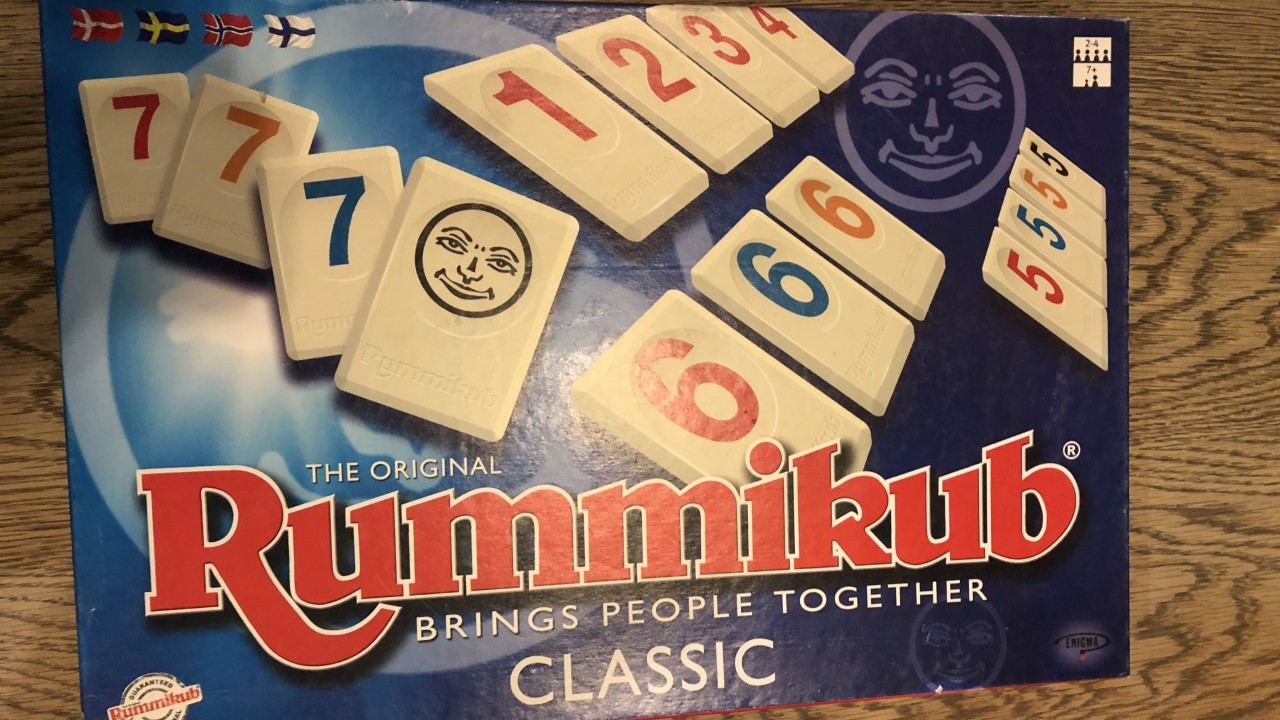Rummikub is a game that was released in 1978 by Lemada Light Industries Ltd. It is a simple game to understand but difficult to master. The game is based on numbered and coloured tiles (from one to 13 in red, blue, black, and yellow) that the players have to set up either in the same colour and order (e.g., one, two, three, and four in black) or in the same number and different colour (e.g., 11 in red, yellow and blue). There are also two joker tiles included that function as any tile in the game.
Different combinations of tiles
At the beginning of the first turn, all players are given 14 tiles at random. Getting the right tiles at the beginning is crucial for winning the game, as the player can get a head start against other opponents if they have the right tiles. If the player cannot place three tiles or more that sum up to 30 or over at the start of the game, they must continue to pick up one more tile until they can. However, getting a combination of over 30 is based solely on chance. I was often stuck with piling more tiles to start playing the game properly while my opponent could continue their game.
An example of the first round’s starting tiles
The game becomes more interesting after the first turn. The basic rule is that the players can place combinations of three tiles or more on the board. However, there is also a “stealing” mechanic that is crucial for victory. The players can steal tiles from other combinations as long as all combinations have at least three tiles. This mechanic is what made the game exciting, as it enabled ruining my opponent’s plans by stealing the most important tiles on the board. I won my first match by stealing the joker during the last turn, but my opponent did the same to me during the second match.
It felt like the game is very much based on luck. One perfect tile can make or break the game. While there are multiple possible solutions to place tiles, it often felt like getting one specific tile opened so many possibilities that could potentially lead to victory. Arguably, the game progresses very differently when there are more players involved. With more players, there are fewer tiles at your disposal and more at the disposal of your opponents. Since we played with only two players, it felt like we had to pick up more and more tiles continuously until one of the players could open more possibilities on the board with just one tile. Perhaps with more skilful players, the game would have progressed faster. All in all, we played two games that of which I won one. My victory felt based solely on luck rather than skill.
Victory
The game is very enjoyable to play, even if you have no idea what you are doing. Of course, my attitude towards games is to play for enjoyment rather than winning. I tried the digital version of the game as well, but it did not bring me the same excitement as the analog version.
Game info
Designer: Ephraim Hertzano
Publisher: Lemada Light Industries Ltd. (Original), Enigma (The version in this review)
Release date: 1978 (Original), 2015 (The version in this review)
Number of players: 2-4
Playing time: 20 minutes per match
Age rating: 7+
Pictures taken by the author



